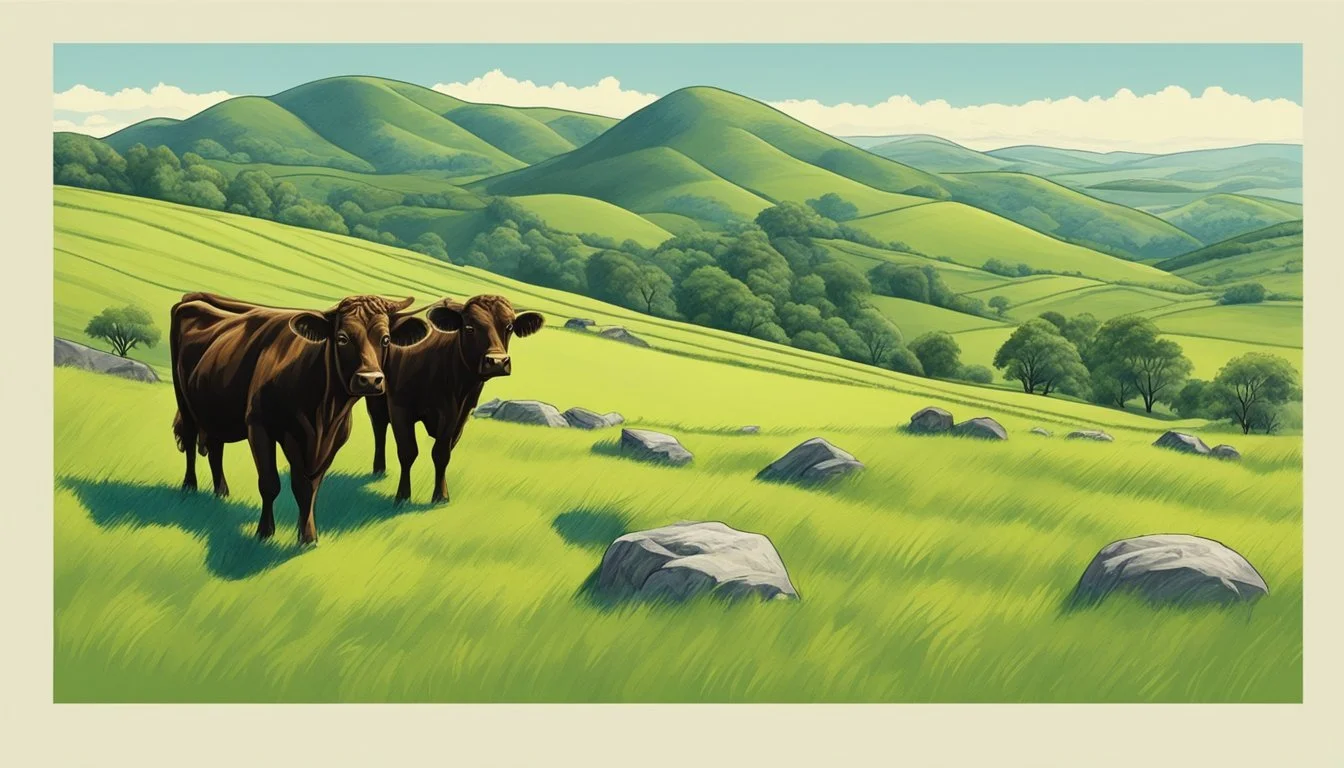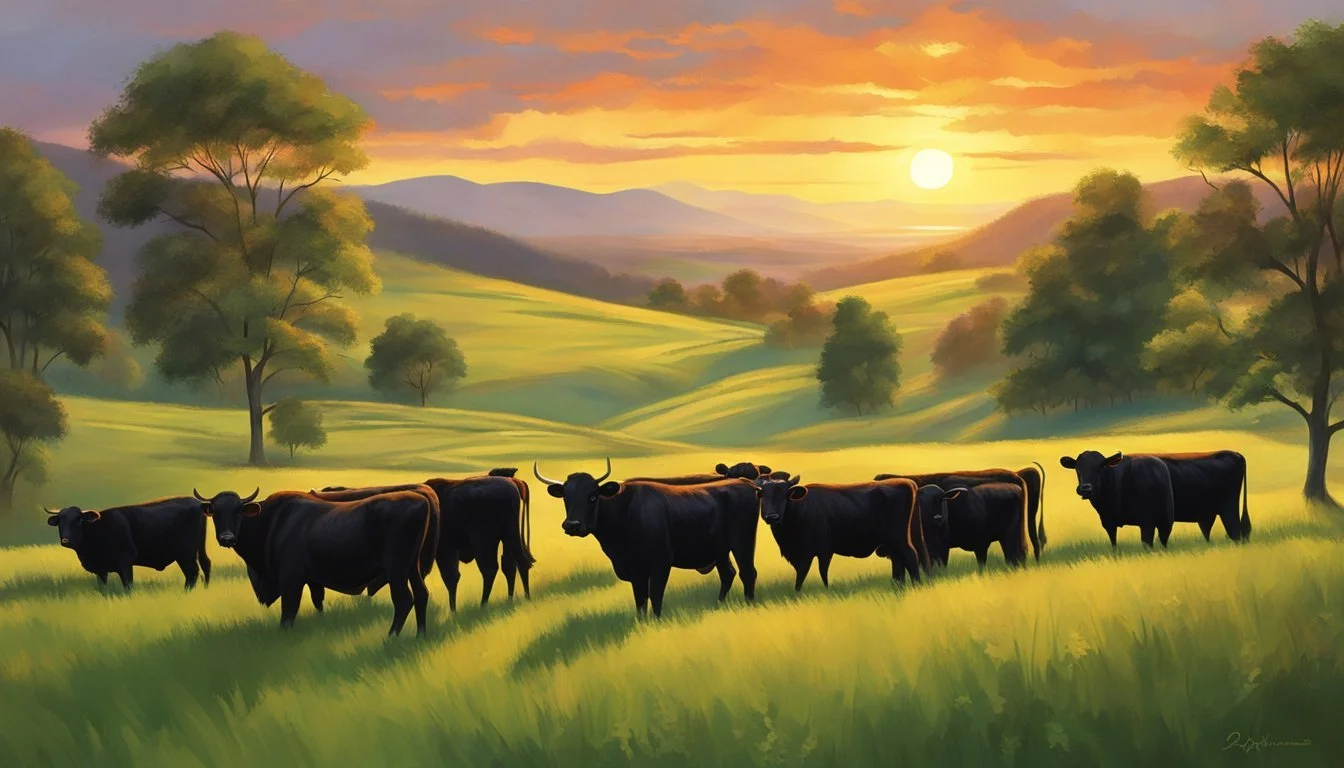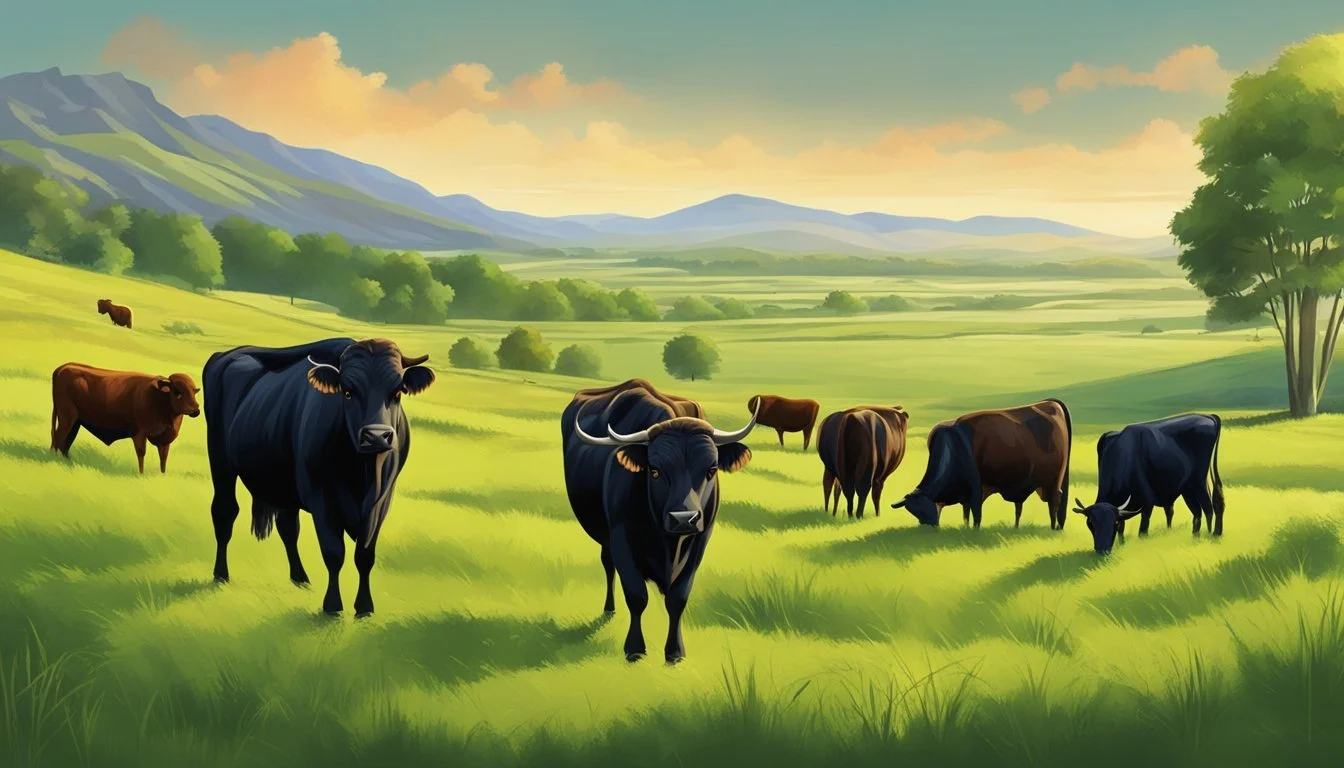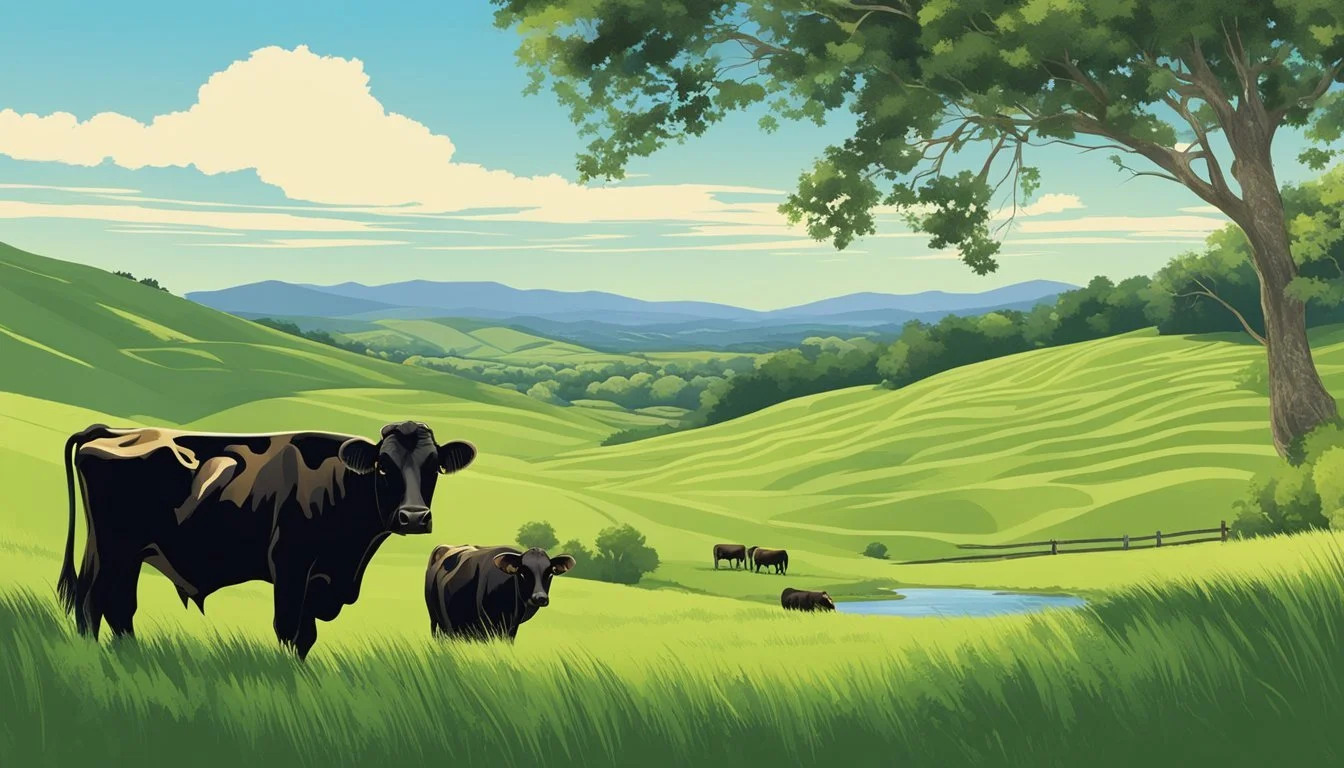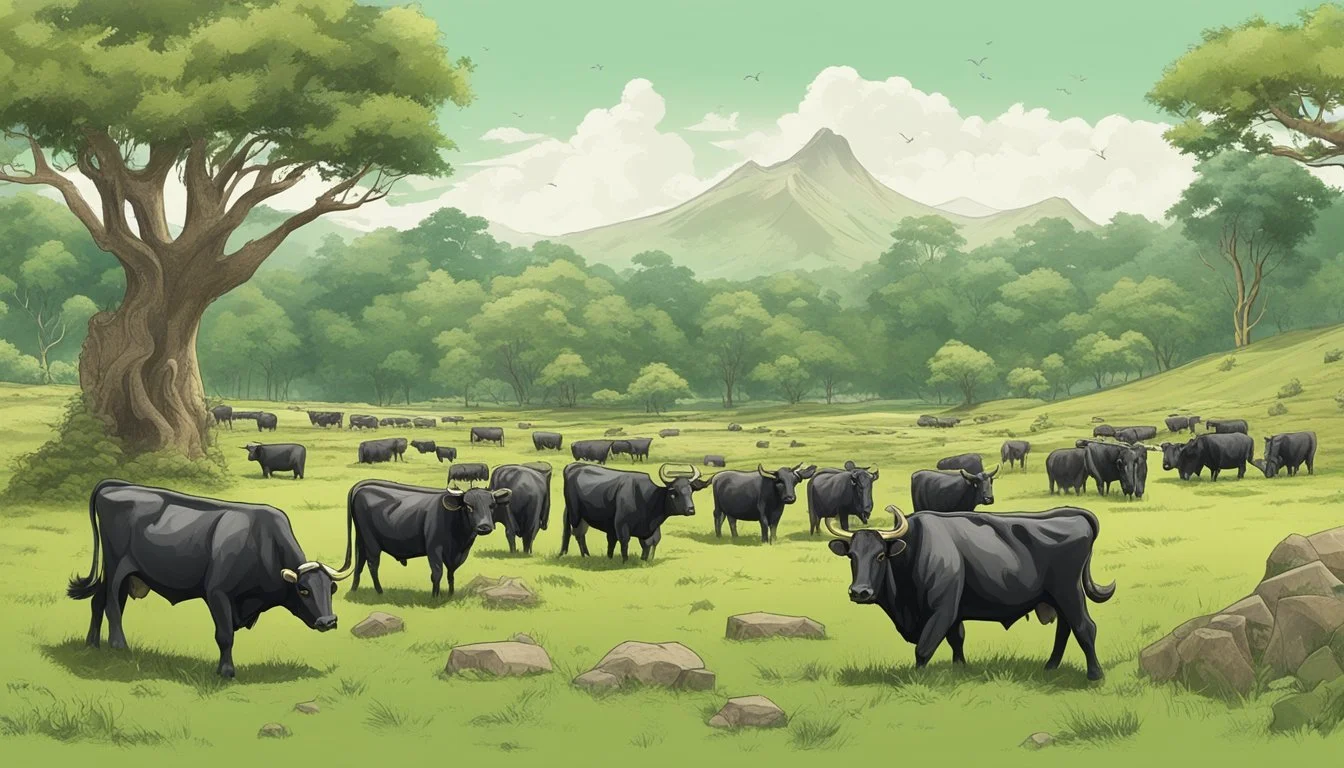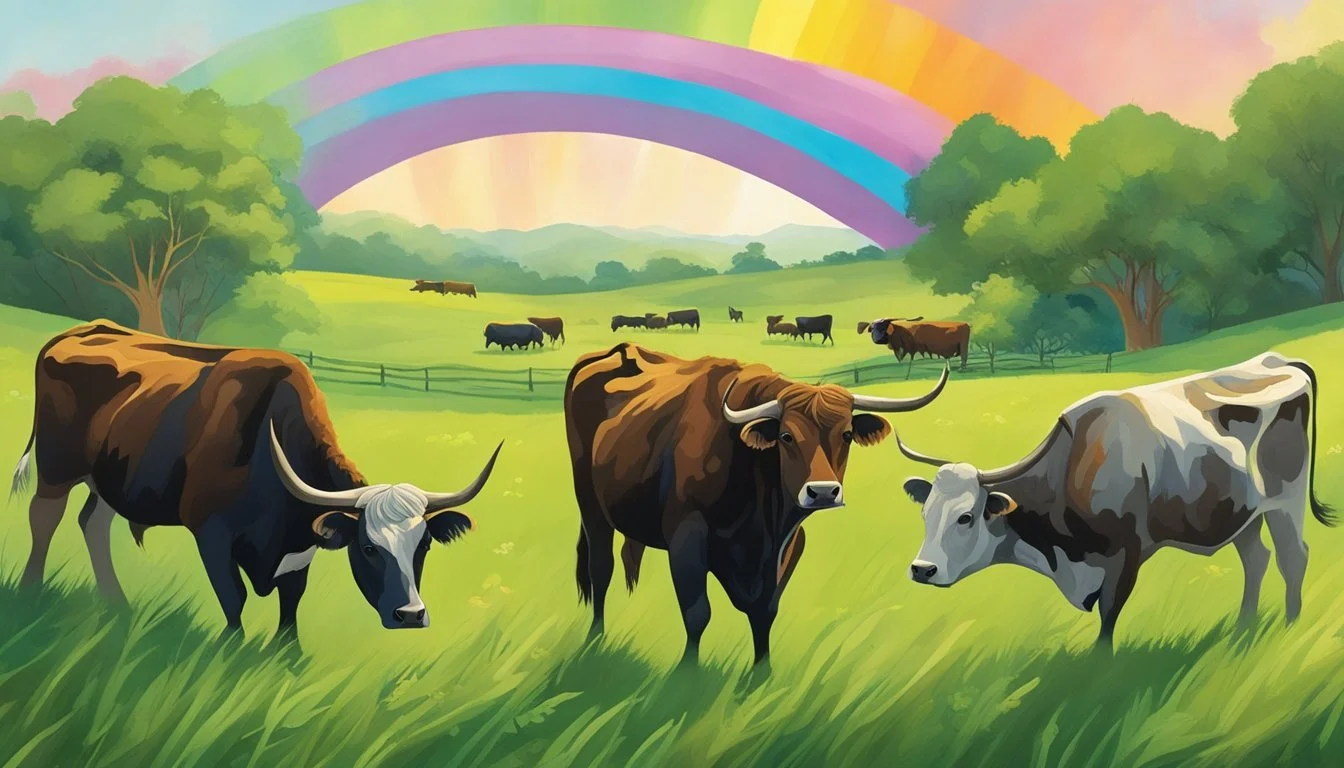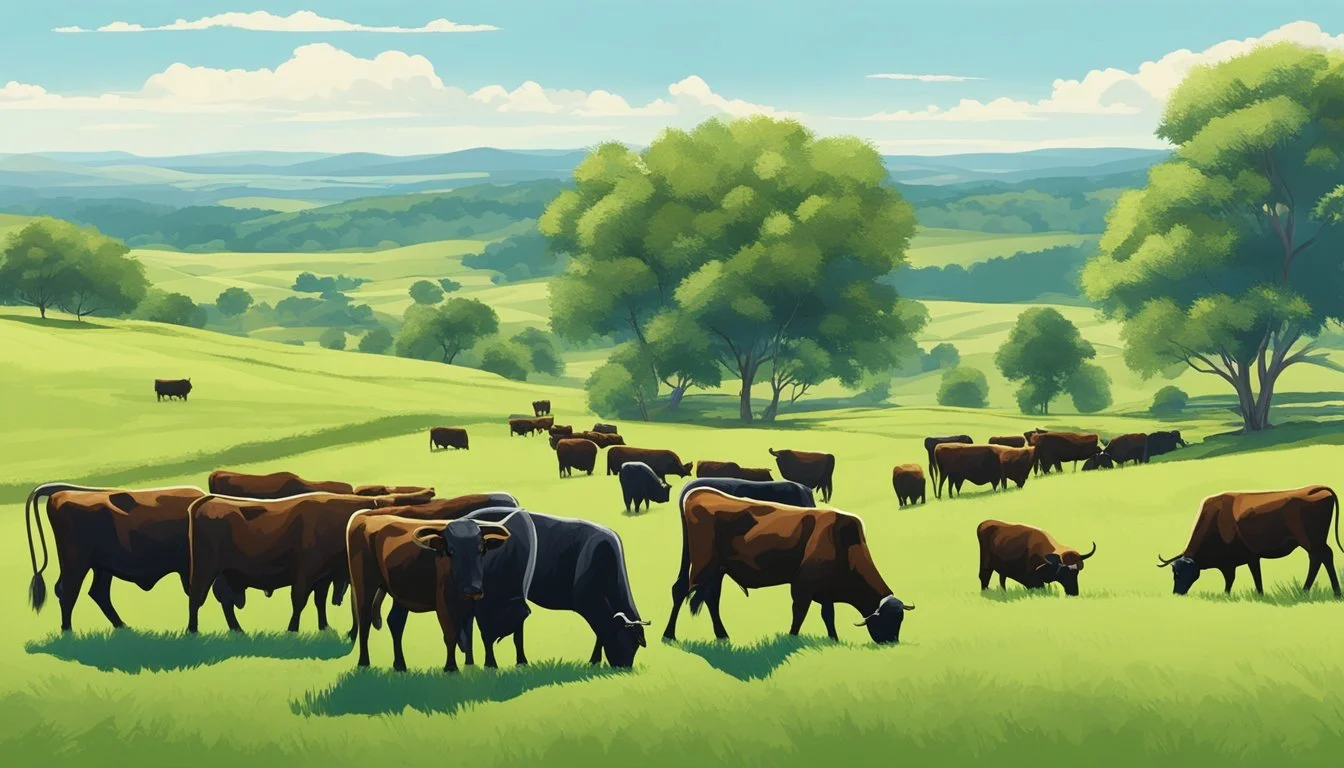Dexter Cattle in Myth and Folklore
Exploring the Historical Legacy and Beliefs
Dexter cattle possess a rich legacy that intertwines with the cultural fabric of Ireland, their country of origin. With roots dating back to the 18th century in County Kerry, the Dexter breed is believed to have been named after a man referred to as Mr. Dexter, who worked as an agent for Lord Hawarden on Valentia Island. This diminutive breed was initially considered a variant of the Kerry cattle but differentiated over time due to its unique qualities and stature.
The cultural resonance of Dexter cattle extends beyond mere livestock; these animals have been emblematic within Irish mythology and folklore. Historically, the Dexter has been celebrated for its hardiness and resilience, aspects that echo the Irish relationship with nature and the land. While the breed encountered near extinction, efforts such as those by David Low in the 19th century and the formation of the Dexter Cattle Society in 1892 have helped preserve their lineage and stories for future generations.
As custodians of an ancient pastoral tradition, Dexters continue to hold a place of importance in rural communities. They are revered not just for their practical benefits—as a compact, dual-purpose breed—but also for their symbolic representation of a connection to ancestors and the natural world. Evangelists of the breed, both in Ireland and around the globe, maintain the narrative of the Dexter, ensuring that the cattle's mythological and cultural significance is not lost to time.
Historical Origins of Dexter Cattle
The Dexter cattle breed boasts a rich heritage, intertwining practical farming needs with Irish folklore. These compact bovines trace their lineage back through centuries, rooted firmly in the agricultural practices and cultural tales of Ireland.
Early Records and Registration
The earliest official record of the Dexter breed appears in the English herd book. In 1892, the English Kerry and Dexter Cattle Society commenced documentation, later focusing solely on Dexters and renaming itself to the Dexter Cattle Society. By 1926, records indicate that 986 bulls and 3,896 cows had been registered, underscoring the breed's proliferation and the importance of maintaining pure bloodlines.
Influence of Notable Breeders
Dexter cattle owe much of their development to key individuals. Mr. Dexter, an agent of Lord Hawarden, is often credited with refining the breed on Valentia Island, leading to its eponymous label. Notable agricultural author David Low also contributed to the breed’s reputation through his mid-19th-century works. The Royal Dublin Society played a pivotal role, encouraging the improvement of livestock breeds, including the Dexter, throughout Ireland.
Role of Dexter Cattle in Irish Folklore
Though concrete details are scarce, the Dexter breed is woven into the lore of early Celts. These small yet sturdy cattle are believed to have been revered by the Celts, symbolizing sustenance and resilience. The intrinsic value placed on the Dexter cow in agrarian societies likely elevated its status in local myth, further entrenching it within the historical tapestry of Ireland.
Legend has it that the Dexter's diminutive stature might have been a deliberate choice by early breeders, possibly to suit the mystical landscapes of Ireland, where folklore often favored the small and enchanting.
Physical Characteristics
The Dexter breed exhibits distinct physical traits that have become hallmarks of its identity. These characteristics include a range of coat colors, a compact yet robust build, and noteworthy genetic traits including the presence or absence of horns.
Color Variations and Markings
Dexter cattle are predominantly black, but they also display red and dun coats. Markings are generally minimal, but some individuals may have white patches on their udders or bellies.
Size and Build
The Dexter cow's stature is uniquely small compared to other European cattle breeds. They have a characteristic short-legged type and a non-short type. Despite their small size, Dexter cattle possess a sturdy and muscular build.
Height and weight specifications for Dexter cattle are as follows:
Height: 92 to 107 centimeters at the shoulder.
Weight: 300 to 350 kilograms for cows.
Genetic Traits and Horn Types
Dexter cattle can be either polled (naturally without horns) or horned. Genetic traits such as the chondrodysplastic-dwarf characteristic are unique to the short-legged Dexter breed, contributing to their compact appearance.
Dexter Cattle As a Dual-Purpose Breed
Dexter cattle stand out due to their efficiency as a dual-purpose breed, providing both quality meat and rich milk, which has cemented their place in agricultural operations.
Meat Production Qualities
Dexter beef is known for its tender texture and flavorful taste. These small cattle pack a punch with their meat production, as they are able to convert feed efficiently into lean muscle. Dexter cows mature early and can be bred at a younger age compared to larger breeds. The meat yields from Dexter cattle are typically smaller but are often prized for the high quality of beef that is well-marbled and rich in taste.
Aspect: Texture
Dexter Beef Qualities: Tender
Aspect: Flavor
Dexter Beef Qualities: Robust, often well-marbled
Aspect: Feed Conversion
Dexter Beef Qualities: Highly efficient
Aspect: Maturity
Dexter Beef Qualities: Early breeding and maturation
Aspect: Beef Yield
Dexter Beef Qualities: Smaller, quality cuts
Dairy Production Traits
When considering Dexter milk, one notes its notably high levels of butterfat and protein, making it excellent for cheese making and butter. The average Dexter cow can produce a modest amount of milk with impressive levels of butterfat, around 4% or greater, making it richer than the milk of many other breeds.
Dairy Traits of Dexter Cattle:
Milk yields suitable for small-scale farming
High butterfat content (Average >4%)
High protein levels contributing to nutritional quality
Efficient milk producers despite smaller body size
Udders well-formed and ideally suited for milking
Dexter cattle, with their dual-purpose capabilities, contribute significantly to dairy and beef production, especially in settings where smaller scale and efficiency are valued. They are versatile, able to thrive in various climates and conditions, which allows their distribution to be quite widespread, benefiting many different farming systems.
Breeding and Herd Management
This section explores the specific practices involved in breeding Dexter cattle and the strategies for herd development and conservation.
Breeding Practices
When managing a breeding program for Dexter cattle, the primary goal is to maintain the distinctive characteristics of the breed, such as their hardiness, small size, and efficiency. Dexters are a dual-purpose breed, valued both for their meat and milk yield. Breeders often select for docile temperament and good maternal instincts. As part of maintaining breed standards, registration in a herd book is essential, and in some cases, preference may be given to animals that are naturally polled (lacking horns) for ease of handling and reduced injury risk.
Traits such as high fertility and longevity are also desirable, with many breeders employing line breeding and other techniques to proliferate these qualities. Breeding practices often involve selecting the best male (bull) and female (cow) based on their pedigree, health, and conformity to breed standards as outlined by breed associations like the Dexter Cattle Society.
Herd Development and Conservation
The development of a Dexter cattle herd requires careful planning, with a focus on promoting genetic diversity to avoid inbreeding. Breeders may keep extensive records to monitor the lineage and traits of individual animals. Conservation efforts include maintaining the genetic purity of the Dexter breed which is known for originating from the southwest of Ireland. The Kerry breed is a relative of the Dexter and, together, they share a deep-rooted heritage linked to the early Celtic cattle of the region.
For conservation grazing, Dexter cattle are often the breed of choice due to their hardy nature and ability to thrive on rough terrain, which can contribute to landscape management and biodiversity. The small size of Dexters makes them particularly suitable for smaller properties and for farmers practicing sustainable farming methods. Efforts to conserve the breed are facilitated by organizations that maintain herds and encourage the registration and documentation of pure-bred animals in recognized herd books. The collaboration between such organizations and breeders is vital for the ongoing sustainability and genetic health of Dexter herds.
Cultural and Economic Impact
The Dexter cattle breed holds a unique position in the agricultural heritage and economy, particularly in their country of origin, Ireland, and their subsequent influence globally. The breed's distinct size and temperament have influenced its cultural and economic roles in different regions.
Cattle in Irish Culture and Economy
In Ireland, Dexter cattle are more than simply livestock; they are a symbol of the country's rural legacy and agricultural resilience. As a native beef breed, they have a significant economic impact due to their adaptability to the Irish environment. Known for their hardiness and efficient grazing, Dexters thrive in the Irish climate, requiring less pasture space and producing quality beef. The breed's smaller size compared to other cattle makes them particularly suited to smallholder farms, which are a traditional part of the Irish rural landscape.
Economic Impact in Ireland:
Efficient Land Use: Ideal for small-scale farms due to their size.
Quality Beef Production: High-quality meat with excellent marbling contributes to the local economy and gastronomy.
Dexter cattle also resonate with cultural significance, being integral to local folklore and identity. Their role transcends economics, deeply rooting them in Ireland's societal fabric as an icon of rural customs and traditional farming practices. Dexter cattle also contribute to biodiversity and the preservation of genetic diversity within Ireland's livestock.
Cultural Significance in Ireland:
Traditional Practices: Key to maintaining rural customs.
Biodiversity: Maintenance of genetic variance within Irish cattle breeds.
Global Spread and Influence
The influence of Dexter cattle extends well beyond Ireland. They have made their way to countries such as America and England, where they have adapted well and contributed to the local economies. In America, Dexters have gained popularity among smallholders and hobby farmers due to their dual-purpose nature (meat and milk production) and ease of management. In England, the breed enjoys a similar status and contributes to niche markets that value their sustainable and eco-friendly beef production.
The global spread of Dexter cattle showcases the breed's adaptability and the international recognition of its economic viability. Dexter cattle continue to bolster the local economies of smaller farms by fitting into sustainable and alternative agricultural systems.
Global Economic Contributions:
America: Embraced by smallholders for dual-purpose utility.
England: Popular in niche markets for sustainable beef production.
The breed's global expansion has also led to a diffusion of its cultural significance, with various communities appreciating the breed's historical background and its connection to the traditional Irish farming narrative.
Global Cultural Diffusion:
Historical Background: Appreciation for the breed's Irish origins.
Traditional Farming Narrative: Symbolizes a connection to simpler, sustainable farming methods.
Conservation Efforts and Breed Societies
As Dexter cattle face challenges in maintaining their population numbers, conservation efforts and breed societies play pivotal roles in their preservation and promotion.
Breed Preservation Initiatives
Breed preservation initiatives for Dexter cattle are essential in ensuring the survival and genetic diversity of this small yet sturdy breed. Due to their efficiency in managing limited acreage and their effectiveness in conservation grazing practices, Dexters are a popular choice for rewilding and sustainable farming projects. These initiatives often involve maintaining herdbooks and registries to ensure pedigree transparency and breed purity. One such registry is the Herd Book maintained by the Dexter Cattle Society in England, which was established in the late 19th century.
Role of Dexter Cattle Societies in Promotion
Dexter Cattle Societies, such as the American Dexter Cattle Association and the Dexter Cattle Society in England, are instrumental in the promotion and knowledge dissemination of the breed. These societies focus on:
Registration: They maintain comprehensive records of Dexter cattle, overseeing the registration processes to ensure breed standards.
Education: By providing resources and information, the societies educate current and potential Dexter cattle owners about the breed.
Events: They organize shows, exhibitions, and meetings to foster a community of breeders and enthusiasts.
Awareness: Societies promote the advantages of Dexter cattle in small-scale sustainable farming systems.
Through these focused efforts, the Dexter breed benefits from conservation measures tailored to its unique qualities and cultural significance.
Practical Tips for Prospective Dexter Owners
Prospective Dexter owners should focus on careful selection, understanding the specific needs of the breed, and recognizing the benefits Dexter cattle offer to small farm operations.
Selecting and Acquiring Dexter Cattle
The first step in acquiring Dexter cattle is to identify animals that match the breed standard. Dexter cattle come in three main color variations: black, red, and dun. Prospective owners should look for reputable breeders who can provide health records and pedigree information to ensure the cattle are of good lineage. It is also important to decide whether polled (naturally hornless) animals are preferred, as this is a common characteristic among Dexters.
Checklist for Selection:
Confirm color (black, red, dun)
Preferentially select polled cattle
Verify health and pedigree records
Observe temperament for compatibility with your farm
Management and Care
Dexter cattle are known for being hardy and efficient, often requiring less feed than larger breeds to maintain healthy body condition. Given their smaller size and hardiness, they are well-suited for varying climates. When managing Dexter cattle, it is crucial to provide adequate pasture for grazing, with some supplementation as required. This breed can thrive on limited acreage, but they do need proper fencing, shelter, and regular veterinary care.
Care Guidelines:
Provide sufficient pasture or high-quality hay
Supplement diet as needed with grain
Ensure housing is dry and draft-free
Maintain routine health checks and vaccinations
Advantages for Small Farm Owners
Dexter cattle offer several advantages to small farm owners. Their small size and short legs make them less damaging to the land, allowing more cows per acre compared to larger breeds. They are generally friendly and easy to handle, which, combined with their size, makes them an ideal family cow. Dexter cows are also efficient in calf production, capable of calving with ease and maintaining a high level of fertility throughout their lives.
Key Advantages:
Improved land usage with more cows per acre
Easily managed due to their friendly nature
Efficient breeders and producers for sustained farm operation
By adhering to these practical tips for selecting, acquiring, and managing Dexter cattle, prospective owners can integrate this versatile breed into their small farm with confidence, enjoying the numerous benefits that come with owning Dexter cattle.

